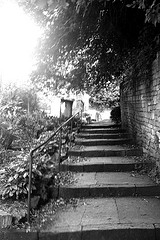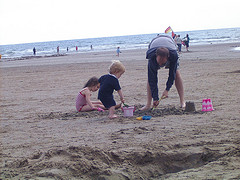What Does Occupation Mean? This.
The Chilean miners stranded down their mine gives an example that OTs can use to communicate the value of occupation.
In a recent BBC article, here, Dr James Thompson, a psychology lecturer at University College London made the point that the priority was not to send anti-depressants to manage a situation but rather that;
“What they need is food and supplies and then systems building up and then to be given tasks to keep them busy.
“Maybe send down some equipment to give them something to do and to keep them involved.”
What a succinct and dramatic way of demonstrating the therapeutic role of occupation.
Join Harrison Training for Free Online CPD Training
Here at Harrison Training we have been looking at using online training facilities as another way of delivering our range of continuing professional development courses for occupational therapists.
We now invite you to join us for a complimentary CPD training session on Thursday 30th September. We shall be running the presentation twice, at 1pm and again at the early evening slot of 7pm.
The topic will be a new 1 hour course “Communication in Occupational Therapy” exploring how we communicate with our clients and colleagues and the problems we encounter.
This presentation is packed with stories and practical advice and will enable you to communicate more effectively to save time and improve relationships in your practice.
Attendees will be sent a 1 hour CPD certificate to confirm their participation and supporting notes.
If you would like to join us, at no cost, then contact us for more details.OK
We look forward to sharing this session with you.
We make sense of the world depending upon our experiences of it.
There are a great couple of posts over at the A Voice In The OT Wilderness blog.
Part one is here.
Part two is here.
The story revolves around a conflict arising from a client’s non-compliance with a specified art exercise. When asked to create a collage, one user, instead, created a 3D model.
This was used by one observer as evidence of that client’s “defiance” – a chilling thought redolent of One Flew Over The Cuckoo’s Nest. There was a fascinating reason however for the deviation between the expectation of the observer and the interpretation and actions of the client.
The story reminds us that although we might be absolutely clear about communicating what we are asking clients to do, they, being the recipient of the message, receive the message and interpret it through their own filters.
Those filters are, in turn, shaped and coloured by their life experiences.
Go to Allie Hafez’ A Voice In The OT Wilderness blog now and read the story for yourself.
Online Training? Your Thoughts…
I am looking at what people’s preferences are regarding accessing training online. Can you help? The more information we have, the better we can tailor our courses to suit your needs.
There are 7 very short multiple choice questions here which will take literally seconds to complete.
Thank you.
What is Occupational Therapy To You?

View From The Bridge
I love coming to work at Harrison Training’s offices here in Bradford on Avon.
The walk from the station takes you across the river, filled with waterlillies and cool promises.
From there you go through the old part of town with its stunning Georgian properties and then walk past the church and up some steps, worn through centuries of use.
 It is hard not to imagine the lives that have been lived here over the years.
It is hard not to imagine the lives that have been lived here over the years.
And then my thoughts shift.
How fortunate we are, those of us able to take these walks and enjoy our surroundings because, let there be no doubt, for all of the beauty in this town, accessibility must be a nightmare.
Inevitably, perhaps, I am drawn once again by this consideration of accessibility, to that old chestnut of a question – What is occupational therapy?
Take me as an example. I am able to draw meaning, pleasure and fulfilment from being in, walking through and interacting with these surroundings. And I wonder, is that the point? Is that what occupational therapy is?
When we enable, reable, rehabilitate, when occupation is not career or work, but being meaningfully occupied, or stimulated, is this what we do?
Forgive me my more metaphysical ramblings this morning, but please share your thoughts.
What is it that you do when you do what you do? What is occupational therapy to you?


